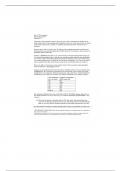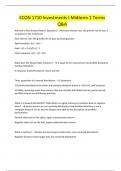Econ 1710 a Study guides, Class notes & Summaries
Looking for the best study guides, study notes and summaries about Econ 1710 a? On this page you'll find 9 study documents about Econ 1710 a.
All 9 results
Sort by
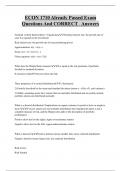
-
ECON 1710 Already Passed Exam Questions And CORRECT Answers
- Exam (elaborations) • 11 pages • 2024
-
- $8.49
- + learn more
Nominal vs Real Interest Rate (+ Equations)Nominal interest rate: the growth rate of your $ as quoted on the investment Real interest rate: the growth rate of your purchasing power Approximation: r(r) = r(n) - i Exact: r(r) = (1+r)/(1+i) - 1 Fisher equation: r(n) = r(r) - E(i) What does the Sharpe Ratio measure?It is equal to the risk premium of portfolio divided by standard deviation. It measures tradeoff between return and risk. Three properties of a normal distribution1) Symmetric ...
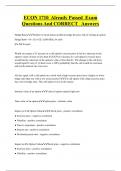
-
ECON 1710 Already Passed Exam Questions And CORRECT Answers
- Exam (elaborations) • 6 pages • 2024
-
- $7.99
- + learn more
Hedge RatioNumber of stock shares needed to hedge the price risk of writing an option Hedge Ratio = H= [Cu-Cd] / [uS0-dS0], for calls [Pu-Pd] for puts Would you expect a $1 increase in a call option's exercise price to led to a decrease in the option's value of more or less than $1A $1 increase in a call option's exercise price would lead to a decrease in the option's value of less than $1. The change in the call price would equal $1 only if: (i) there were a 100% probability that ...
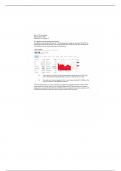
-
Econ 1710 Homework 6 Solutions
- Other • 7 pages • 2024
- Available in package deal
-
- $9.99
- + learn more
This is a comprehensive and detailed homework 6 solution doc for Econ 1710. Quality stuff!! You'll definitely need this!!
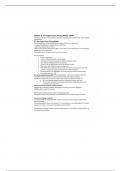
-
Econ 1710 - CAPM Notes
- Class notes • 7 pages • 2024
- Available in package deal
-
- $10.99
- + learn more
This is a comprehensive and detailed note on chapter 9; The Capital Asset Pricing Model for Econ 1710. Quality stuff!! You'll need it!!
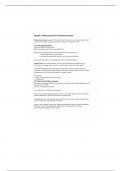
-
Econ 1710 - Macroeconomic industrial analysis Notes
- Class notes • 5 pages • 2024
- Available in package deal
-
- $10.99
- + learn more
This is a comprehensive and detailed note onMacroeconomic industrial analysis for Econ 1710. Quality stuff!! You'll need it!!
This is a comprehensive and detailed homework 1 solution doc for Econ 1710. Quality stuff!! You'll definitely need this!!
ECON 1710 Investments I Midterm 1 Terms Q&A
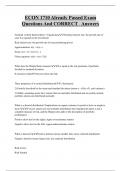
-
ECON 1710 Already Passed Exam Questions And CORRECT Answers
- Exam (elaborations) • 11 pages • 2024
-
- $10.49
- + learn more
Hedge RatioNumber of stock shares needed to hedge the price risk of writing an option Hedge Ratio = H= [Cu-Cd] / [uS0-dS0], for calls [Pu-Pd] for puts Would you expect a $1 increase in a call option's exercise price to led to a decrease in the option's value of more or less than $1A $1 increase in a call option's exercise price would lead to a decrease in the option's value of less than $1. The change in the call price would equal $1 only if: (i) there were a 100% probability that ...
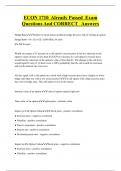
-
ECON 1710 Already Passed Exam Questions And CORRECT Answers
- Exam (elaborations) • 6 pages • 2024
-
- $10.99
- + learn more
Nominal vs Real Interest Rate (+ Equations)Nominal interest rate: the growth rate of your $ as quoted on the investment Real interest rate: the growth rate of your purchasing power Approximation: r(r) = r(n) - i Exact: r(r) = (1+r)/(1+i) - 1 Fisher equation: r(n) = r(r) - E(i) What does the Sharpe Ratio measure?It is equal to the risk premium of portfolio divided by standard deviation. It measures tradeoff between return and risk. Three properties of a normal distribution1) Symmetric ...

Did you know that on average a seller on Stuvia earns $82 per month selling study resources? Hmm, hint, hint. Discover all about earning on Stuvia



